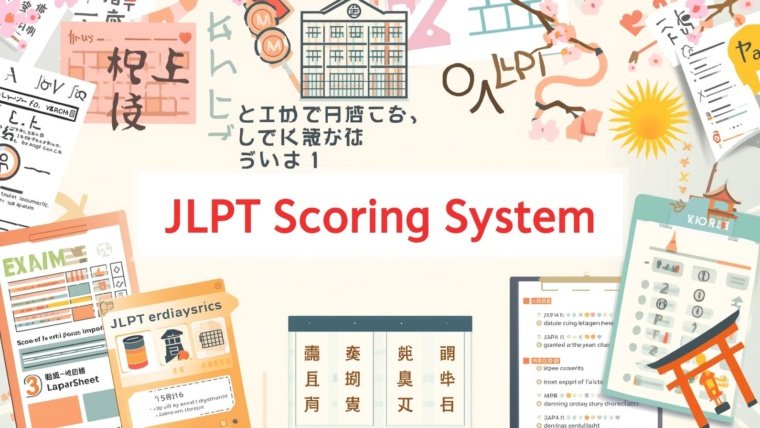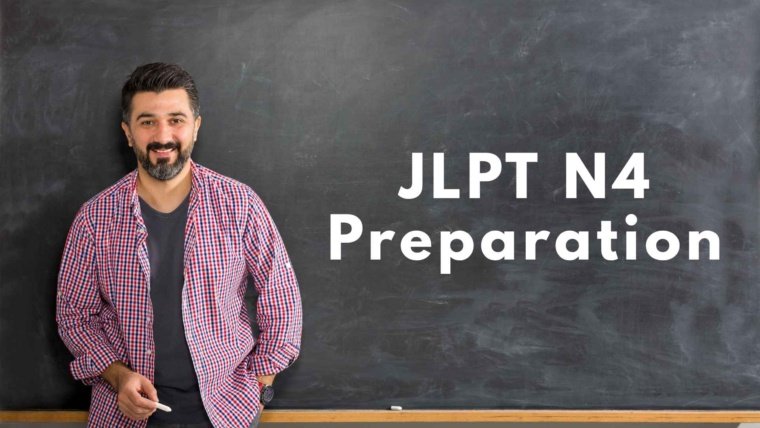For those serious about their Japanese language journey, the Japanese Language Proficiency Test (JLPT) N3 serves as a pivotal bridge between beginner and advanced levels. It signifies your ability to understand everyday Japanese in familiar situations, making it a valuable certification for academic pursuits, career opportunities, and deeper cultural immersion in Japan. If you’re an Indian learner aiming for the JLPT N3 in 2025, understanding its structure, scoring, and effective preparation strategies is paramount.
This comprehensive guide will break down the JLPT N3 exam pattern for 2025, providing insights into each section, time management, and essential tips for success. Official Website.
What Does the JLPT N3 Exam Pattern Cover?
The JLPT N3 assesses your intermediate Japanese language skills, encompassing a broader range of vocabulary, more complex grammar, and the ability to comprehend texts and conversations at a near-natural speed. It evaluates your understanding of Japanese used in daily life, work, and social interactions.

The JLPT N3 exam is divided into three core sections:
- Language Knowledge (Vocabulary)
- Language Knowledge (Grammar) & Reading
- Listening Comprehension
Let’s delve into each section:
1. Language Knowledge (Vocabulary)
This section tests your knowledge of a wider range of Japanese words and Kanji. You’ll need to be familiar with approximately 3,000 to 3,750 vocabulary words and around 600 to 650 Kanji characters. Questions are multiple-choice and focus on:
- Kanji reading (漢字読み): Selecting the correct reading of underlined Kanji.
- Orthography (表記): Choosing the correct Kanji or Katakana for a word written in Hiragana.
- Contextual usage (文脈規定): Identifying the word that best fits the given sentence context.
- Synonyms/Paraphrases (言い換え類義): Finding words or phrases with similar meanings.
- Usage (用法): Determining the correct usage of a word in a sentence.
For Indian learners, consistent Kanji practice is crucial here. Focus on understanding Kanji radicals and their components to aid memorization.
2. Language Knowledge (Grammar) & Reading Comprehension
This combined section evaluates your understanding of N3-level grammar structures and your ability to read and comprehend Japanese passages. It is typically the longest section and requires efficient time management.
Grammar (文法): Questions are multiple-choice and cover:
- Grammar form (文法形式の判断): Selecting the appropriate grammar form or phrase to complete a sentence.
- Sentence composition (文の組み立て): Rearranging jumbled parts to form a grammatically correct sentence. These often have a “*” mark, indicating a specific part that needs to be correctly placed.
- Text grammar (文章の文法): Choosing the sentence that logically fits into a paragraph.
N3 grammar introduces more nuanced expressions, passive and causative forms, and various conjunctions. Consistent practice with sentence patterns is vital.
Reading Comprehension (読解): This part assesses your ability to read and understand various types of Japanese texts. Passages are generally longer than N5/N4 and include:
- Short passages (短文): Around 150-200 characters, usually with one question.
- Medium passages (中文): Around 350 characters, requiring you to grasp main ideas.
- Long passages (長文): Around 550 characters, testing your understanding of the overall argument or direction.
- Information retrieval (情報検索): Extracting specific information from advertisements, flyers, notices, or schedules.
For effective reading, focus on identifying main ideas, understanding cause-and-effect relationships, and recognizing the author’s intent. Practice reading varied materials like short newspaper articles, blog posts, and simple fictional stories.
3. Listening Comprehension (聴解)
This section tests your ability to understand spoken Japanese at a near-natural speed. You’ll listen to short conversations, announcements, and narratives, then answer multiple-choice questions. The content covers everyday situations, public announcements, and simple discussions.
Types of questions include:
- Topic understanding (課題理解): Grasping the main idea and context of a conversation.
- Point extraction (ポイント理解): Identifying key information or specific details from the dialogue.
- Summary (概要理解): Understanding the overall meaning and the speaker’s intent.
- Verbal expression (発話表現): Choosing the correct dialogue line based on the audio and accompanying images.
- Quick response (即時応答): Responding immediately to short questions heard in the audio.
To improve listening skills, immerse yourself in Japanese audio. Listen to N3-level podcasts, watch Japanese TV shows or anime (with and without Japanese subtitles), and engage in listening drills designed for the N3 level.
JLPT N3 Exam Structure and Time Allotment (2025):
Understanding the exact structure and time limits is crucial for effective time management during the exam.
- Total Questions: Approximately 100-110 questions across all sections.
- Total Duration: 140 minutes (2 hours and 20 minutes).
Here’s the typical breakdown for JLPT N3:
| Section | Time Allotment | Score Range | Minimum Passing Score |
| Language Knowledge (Vocabulary) | 30 minutes | 0-60 points | 19 points |
| Language Knowledge (Grammar) & Reading | 70 minutes | 0-60 points | 19 points |
| Listening Comprehension | 40 minutes | 0-60 points | 19 points |
| Total | 140 minutes | 0-180 points | 95 points (Overall) |
Export to Sheets
Important Scoring Notes: To pass the JLPT N3, you must meet two criteria:
- Total Score: Achieve an overall score of at least 95 points out of 180.
- Sectional Minimums: Score at least 19 points in each of the three sections (Vocabulary, Grammar & Reading, and Listening). Even if your total score is high, failing to meet the minimum in any one section will result in a fail. This emphasizes the need for balanced preparation.
Strategies for JLPT N3 Success in 2025
Passing the JLPT N3 requires a focused and consistent study plan. Here are some key strategies, especially beneficial for Indian learners:
- Master Vocabulary and Kanji:
- Consistent Memorization: Dedicate daily time to learning new N3 vocabulary and Kanji. Use flashcards (Anki, Quizlet) and spaced repetition.
- Contextual Learning: Don’t just memorize isolated words. See them in sentences, read simple Japanese texts, and try to use them in your own practice sentences.
- Kanji Radicals: Learn the radicals of Kanji to understand their components, which aids memorization and recognition.
- Intensive Grammar Practice:
- Understand Nuances: N3 grammar often involves subtle differences between similar expressions. Focus on understanding these nuances and when to use each form.
- Sentence Pattern Drills: Practice constructing sentences using various N3 grammar patterns. BunPro or textbooks like Shin Kanzen Master and TRY! JLPT N3 are excellent resources for this.
- Error Analysis: Keep a log of your grammar mistakes and review them regularly to avoid repeating them.
- Read Widely and Actively:
- Variety of Texts: Read short articles, news snippets (e.g., NHK News Web Easy), blog posts, and simple stories. This exposes you to different writing styles and vocabulary.
- Active Reading: Don’t just skim. Try to identify the main idea, supporting details, and the author’s purpose. Practice summarizing passages in your own words.
- Time Management for Reading: The Reading section is time-intensive. Practice reading passages under timed conditions to improve your speed and comprehension.
- Boost Listening Comprehension:
- Daily Exposure: Listen to Japanese regularly. Use N3-level listening exercises from textbooks, podcasts, or online resources.
- Active Listening: Don’t just passively listen. Try to catch keywords, identify the speakers’ intentions, and understand the flow of conversation.
- Shadowing: Practice repeating what you hear, which helps with pronunciation and rhythm, and aids comprehension.
- Varying Content: Listen to different types of audio, from clear dialogues to slightly more complex narratives with some background noise.
- Regular Mock Tests and Review:
- Simulate Exam Conditions: Take full-length practice tests under timed conditions. This is crucial for familiarizing yourself with the format, managing your time, and building stamina.
- Analyze Performance: After each mock test, thoroughly review your answers. Identify your weak areas and dedicate more study time to them.
- Track Progress: Keep a record of your scores and performance in each section to see your improvement over time.
Important Dates and Information for Indian Learners (2025)
The JLPT is generally held twice a year, in July and December, across various cities in India.
- Expected JLPT July 2025 Exam Date: Sunday, July 6, 2025
- Expected JLPT December 2025 Exam Date: Sunday, December 7, 2025
Major Indian cities like New Delhi, Mumbai, Chennai, Bengaluru, Kolkata, and Pune typically host the exam. Always check the official JLPT India website (e.g., MOSAI) or local test center announcements for the exact dates, registration periods, and locations for 2025, as these can vary slightly.
Registration: Registration typically opens a few months before the exam date. For the July exam, it usually closes by mid-April, and for the December exam, by late September. Register well in advance to secure your spot.
Need Personalized Guidance for Your JLPT N3 Preparation?
The JLPT N3 can be challenging, but with the right guidance and a structured approach, you can definitely achieve your goal. If you’re feeling overwhelmed or need a customized study plan, expert support can make a significant difference. Click Here.
We are dedicated to helping you master Japanese and succeed in the JLPT N3. Our programs offer tailored study plans, clear explanations of complex grammar points, extensive practice materials, and strategies to boost your confidence.
Don’t hesitate to take the next step in your Japanese learning journey! Contact us for personalized advice or to join our focused study sessions.
Call us now at +918700956038 and embark on your path to mastering the JLPT N3!



